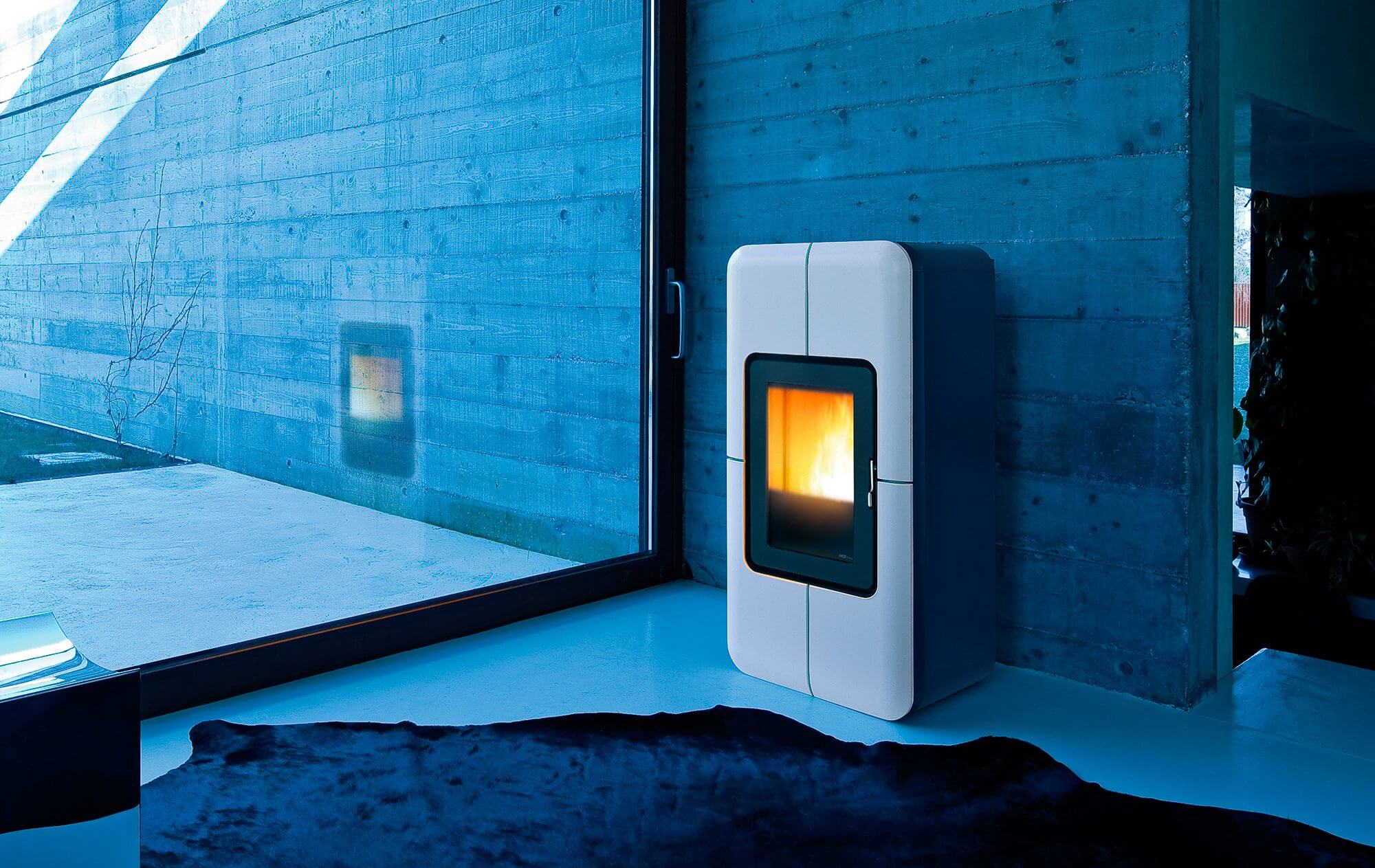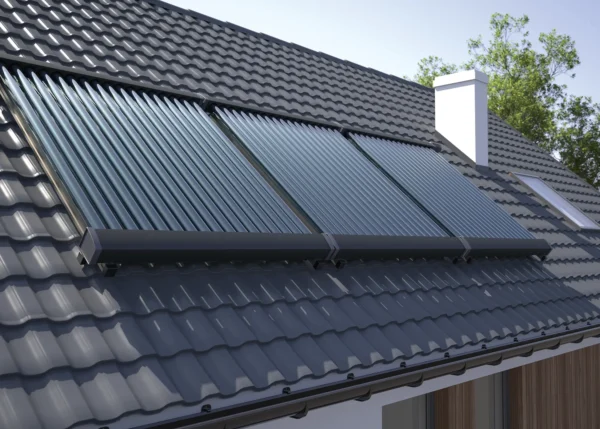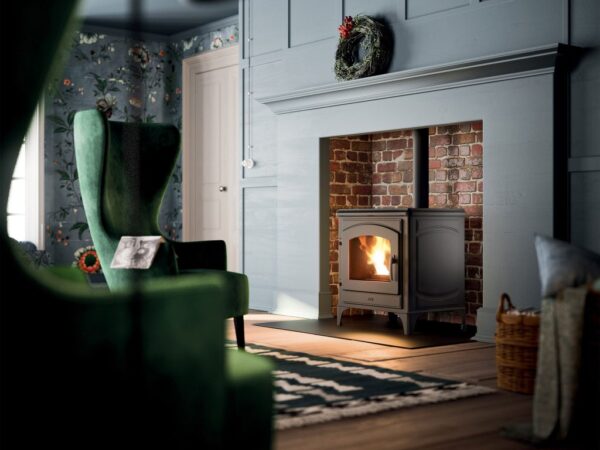The Renewable Heat Incentive: A Practical Guide
Renewable energy has a crucial role to play in lowering the UK’s reliance on fossil fuels, and thanks to the government’s Renewable Heat Incentive (RHI), domestic consumers can also do their part.
Introduced in April 2014 and run by Ofgem, the scheme offers households seven years of payments at a fixed rate for using biomass, air source heat pumps, ground source heat pumps and solar thermal panels.
What is the Renewable Heat Incentive?
The incentive is principally aimed at existing properties not on the gas grid – those using expensive alternatives such as oil-fired boilers – but one-off new builds still qualify. You will be asked to provide additional proof that you are a self-builder, such as an invoice for substantial structural materials or labour.
“The RHI tariff is deemed based on the kWh/yr household heating requirement assessed by an Energy Performance Certificate,” says Chris Davis, commercial director at Kensa Heat Pumps. “Self-build properties need to be occupied for at least 183 days before they are able to apply for the domestic RHI under the deeming rule.
Applications can be made before this time, but this then requires energy usage to be metered. The side-effect of this is that the quarterly payments are variable and no longer guaranteed to be at the same level each year, as your payments will depend on the actual energy consumption. In our experience, most self-builders wait until the 183 day period has expired before applying.”
Your heating system must be installed by a Microgeneration Certificate Scheme (MCS) approved installer (you’ll need to obtain the MCS certificate number in order to apply for the RHI). The individual products themselves must also appear on the RHI’s eligibility list.
Once the work has been approved, you’ll receive quarterly payments for seven years.
Tariffs change periodically, but the current rates (October 2018) are as follows:
| Technology | Tariff | Annual heat demand limit (kWh) |
|---|---|---|
| Biomass boilers and stoves | 6.74p/kWh | 25,000 |
| Air source heat pumps | 10.49p/kWh | 20,000 |
| Ground source heat pumps | 20.46p/kWh | 30,000 |
| Solar water heating | 20.66p/kWh | n/a |
For current applications, you’ll be paid 6.74p for every kilowatt hour (kWh) of heat from biomass boilers; 10.49p for air source heat pumps (ASHPs); 20.46 for ground source heat pumps (GSHPs); and 20.56p for solar thermal panels.
Tariff levels for new applicants are reviewed quarterly and can be reduced if too many people join the scheme – as has recently happened with biomass, which has seen a 20% drop from 8.93p per kWh down to 7.14p per kWh for applications made from 1 July this year.
However, once you’ve joined the RHI, the initial tariff is fixed for the full seven years. The following sections are a brief guide to the four eligible technologies.
Quick guide: Combining renewable technologiesThe fact that solar thermal systems with a heat store – widely considered a sensible, obvious choice to go with something like a biomass boiler – are not eligible for the domestic RHI is a major sticking point for some homeowners and industry experts. “Combining renewable heat sources can be a very good idea; if we’re assuming that the end user is going to ignore RHI handouts and simply go for the best setup available to provide low-cost heating and hot water,” says Doug Haigh at Begetube. “The biggest problem with fitting multiple technologies is that the concept is currently alien to the UK, so very few people understand how to do it.” |
Biomass boilers
For the purposes of the RHI, the term biomass covers heating systems that burn wood pellets, chips, logs or briquettes. Standalone stoves are not included in the incentive, with the exception of pellet types that have a back boiler attached.
Biomass appliances can be sited in a utility room or a separate outbuilding, but because of their size most people opt for the latter (you’ll need to factor in the cost of insulated underground pipes to carry the hot water to the house). From 5 October 2015, your fuel supplier must be on an approved list to qualify for the RHI.
Expect some maintenance, principally filling up the fuel store (from where it feeds into the boiler) and emptying the ashbin. According to the Energy Saving Trust, a pellet boiler big enough to heat an average home costs between £9,000 and £21,000, including installation.
Solar thermal panels
This technology uses the sun’s heat to generate domestic hot water (DHW) and provide space heating. However, to qualify for the RHI, it must provide hot water only, which rules out systems that include a heat store
“The domestic incentive is paid based on an estimate of energy production, so the more people in the house, the larger the calculated energy benefit will be,” says Stuart Elmes from Viridian Solar.
“Typical RHI payments range between £1,500 and £3,500 over the seven years depending on the number of people and the size of the system.” That’s on top of the bill savings you’ll see from reducing demand on your boiler.
Solar thermal systems can provide most of your DHW during the summer months. To achieve this, you’ll need plenty of sunny roof space (panels can also be fixed to a frame on a flat roof) and room for a hot water cylinder. Only a handful of combi boilers are compatible with this technology since not all of them accept pre-heated water.
Viridian Solar has developed a new RHI-compatible product, The Pod, which pre-heats water on demand as it flows to the combi, so that the boiler then burns less oil or gas to achieve its outlet temperature.
With costs starting at £3,000 and a typical system coming in at £5,000, solar thermal is the cheapest of the renewable heating options.
Ground source heat pumps
This technology harnesses warmth from below the earth’s surface, turning it into useful energy for the home.
The heat is picked up via pipework that’s buried in the soil and filled with water and antifreeze. This is then fed through a heat exchanger in the pump to concentrate it, then transferred to a hot water cylinder, and on to radiators or underfloor heating (UFH).
Although you will use electricity to run the pump, the end result is that, for every unit of electricity used, around four units of heat are produced.
Pipework can be laid horizontally in trenches or vertically via boreholes; the former is more common, and cheaper, but you’ll need enough garden space. Heat pumps work best with low-temperature systems – underfloor heating and low-flow radiators – and do not perform well in homes that are poorly insulated or draughty. Expect to pay £11,000- £15,000 to install a typical system.
“Wherever possible we would recommend ground source,” says Paul Watson at Ice Energy. “It’s more efficient than air source, but also more expensive. However, the higher tariff is designed to reflect that.”
Air source heat pumps
These pumps work on the same principle as their ground source cousins, but absorb heat from the outside air rather than the soil. They are cheaper, and less disruptive to install, but not nearly as efficient.
You’ll need a sunny external wall with plenty of space around the unit to prevent air-flow problems. Like GSHPs, these systems work best with underfloor heating and low-temperature radiators – and a well-insulated, airtight home is an absolute must. Expect to pay between £7,000-£11,000 depending on the size of your home and its heating demands.
Note that the above describes air-to-water systems. Air-to-air systems are also available, but these are not eligible for the RHI.
Main image: Toba Hydro pellet stove from Green Square

































































































 Login/register to save Article for later
Login/register to save Article for later












Comments are closed.